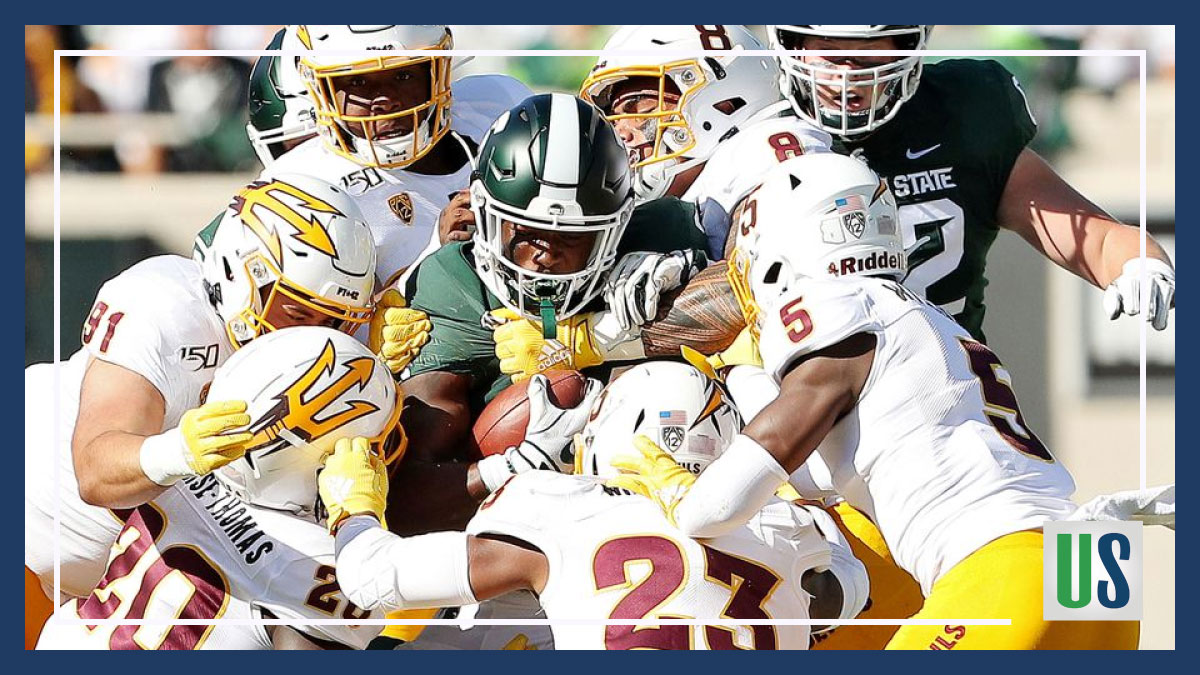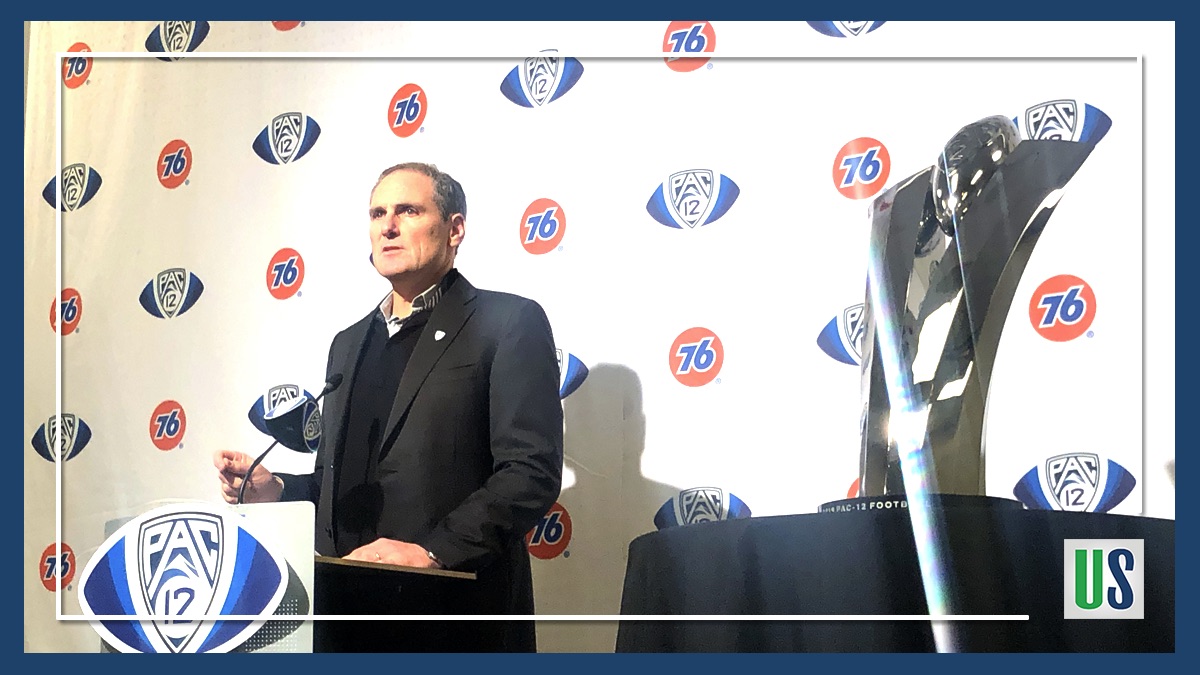Don’t look now but the Pac-12 has six — yes six! — teams in the latest AP Poll and USA Today Coaches Poll. Utah (10 AP, 11 Coaches), Oregon (16 AP, 17 Coaches), Washington State (19 AP, 19 Coaches), Washington (22 AP, 21 Coaches), Cal (23 AP, 23 Coaches) and Arizona State (24 AP, 24 Coaches) all find themselves in the college football polls after their Pac-12 football week 3 results.
With the addition of California and Arizona State into the week 4 AP Top 25 college football poll, the conference’s six teams are the most it has had in the poll since Week 13 of 2016. This bodes well for the Pac-12 Conference’s perception as it enters the bulk of conference play. What doesn’t bode well, however, are the mounting out-of-conference losses.
The Bad From Pac-12 Football Week 3
The Pac-12 went 8-4 in college football week 3. With no conference games played this week (there were two in week 2), the conference did benefit from eight non-conference wins to just four non-conference losses. And while a couple of the wins were nice, most came against inferior opponents in expected fashion. The losses, however, weren’t so great.
UCLA, Stanford, Colorado, and USC all dropped non-conference tilts in week 3. Of these losses, only one can really be considered acceptable.
Addressing this ‘acceptable’ loss, nobody expected the UCLA Bruins to put up a fight against Oklahoma. The Sooners be in the College Football Playoff picture throughout the year and are one of college football’s most imposing teams. The Bruins, meanwhile, are not.
After an offseason in which Chip Kelly cleaned house, the Bruins are now playing like it. Their offense is miserable, defense inept and all signs point to a massive rebuild in the years to come. Adding salt to the wound of an already embarrassing loss was the terrible attendance despite tickets being given away to the game.
The Rose Bowl deserves better. The Pac-12 deserves better.
Colorado, Stanford and USC don’t have excuses like the Bruins. They’re not going through complete rebuilds, even though the Buffaloes did bring in new head coach Mel Tucker during the offseason.
USC and true freshman quarterback Kedon Slovis looked brilliant at times but lost during most others. The talent is there to compete with the best, but consistency is becoming an issue with the Trojans. Losing to BYU was tough for the Trojans and the Pac-12.
Stanford’s loss to UCF wasn’t as bad. The return of quarterback K.J. Costello did not go well and UCF freshman quarterback Dillon Gabriel looked like a stud against Stanford’s porous secondary. Still, for what Stanford could have been — and still could be (a scary thought for the Pac-12) — in 2019, a blowout loss to UCF is difficult to swallow.
Then there was Colorado. After a big win against Nebraska at home, whispers began about the Buffaloes being back. The Air Force Falcons and their triple-option ignored those, disposing of an inconsistent Colorado team in OT. It was a result that once again sparked the debate of why the Pac-12 struggles so much with what should an inferior Mountain West.
The Good From Pac-12 Football Week 3
What did go well in Pac-12 football week 3 was the continued rebound of Arizona, the emergence of Arizona State, and the conference’s headliners holding ground.
Since a shocking week zero loss to Hawaii, Arizona has rattled off two wins. Quarterback Khalil Tate looked the Heisman candidate many want him to be and the defense actually held a decent offense in check. With a bye week followed by games against UCLA and Colorado, the Wildcats could regroup in fine fashion in the coming weeks.
The other team from The Grand Canyon State, the Arizona State Sun Devils, had a more impressive showing. Having held their first two opponents to seven points each, the Sun Devils continued that trend against the Michigan State Spartans in Pac-12 football week 3. While their offense may need work, that defense is good.
The remaining Pac-12 teams came away with expected wins. Utah managed a shutout against Idaho State, Oregon’s defense was equally impressive in their 35-3 win over Montana and Washington trounced Hawai’i. California, meanwhile, sneaked into the polls with a so-so performance against North Texas and Oregon State finally won a game.
All-in-all it wasn’t Pac-12 football week 3 wasn’t so bad for the conference. But it wasn’t so great either. Tough non-conference losses were softened by emerging contenders who now have a lot to prove in conference play. There’s a lot of football left to play and the results from Pac-12 week 3 are setting up a wild ride.



